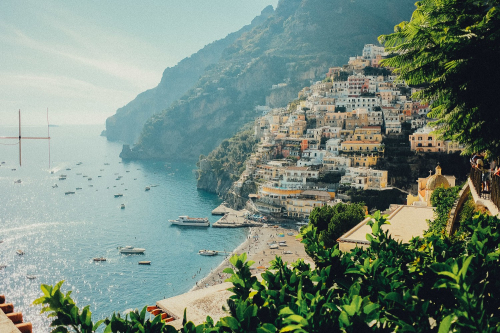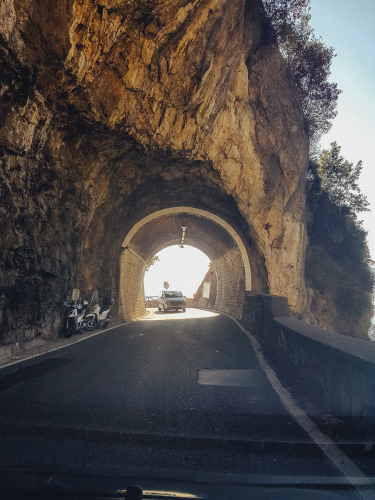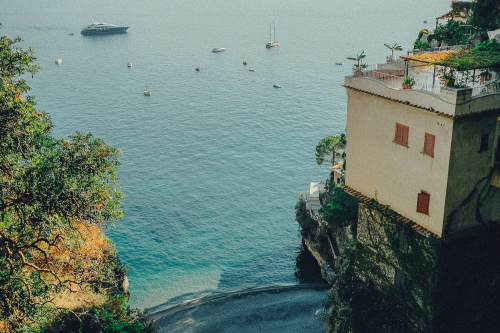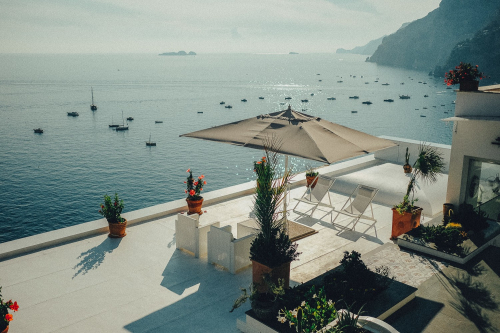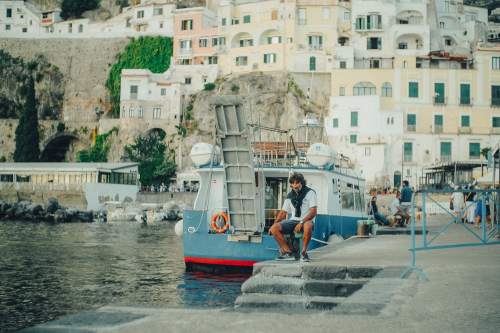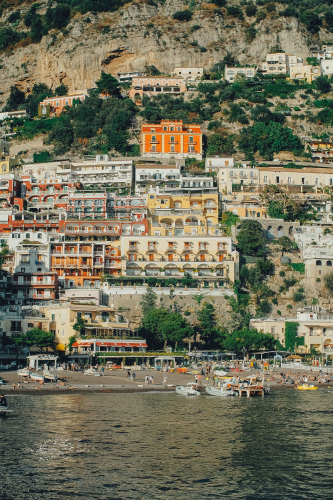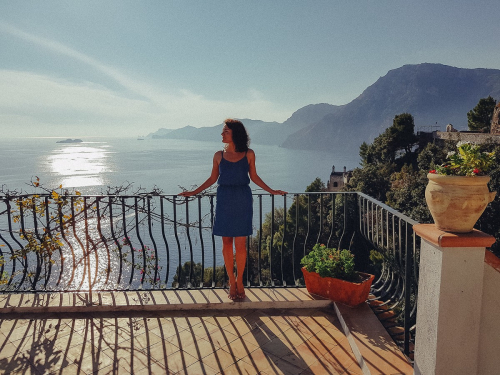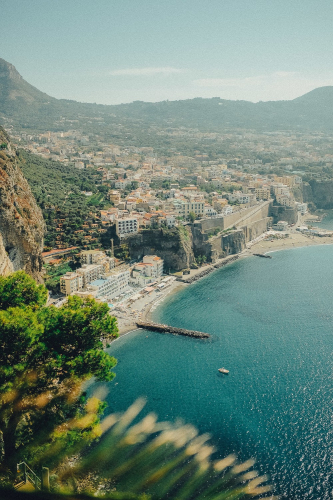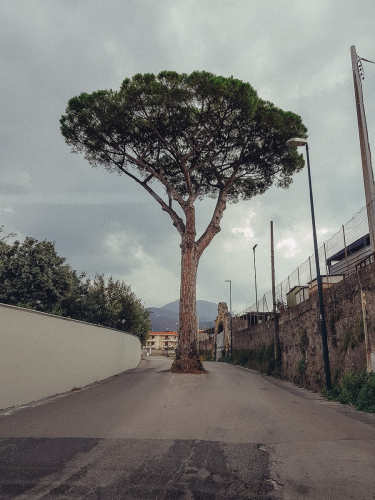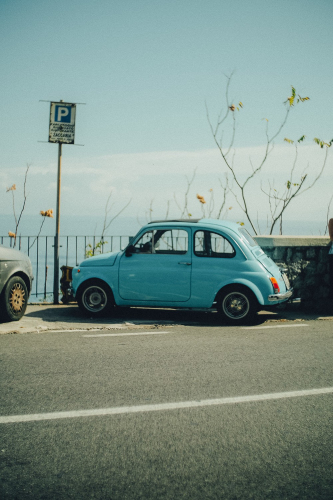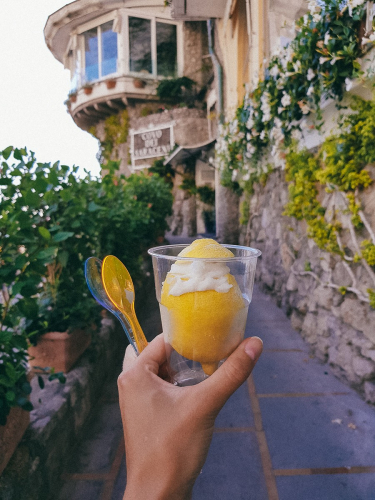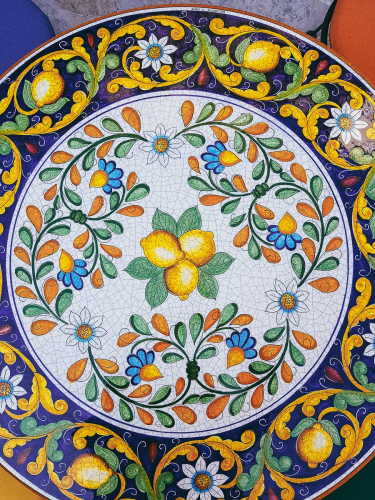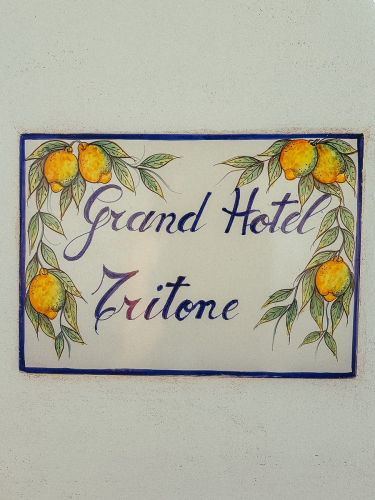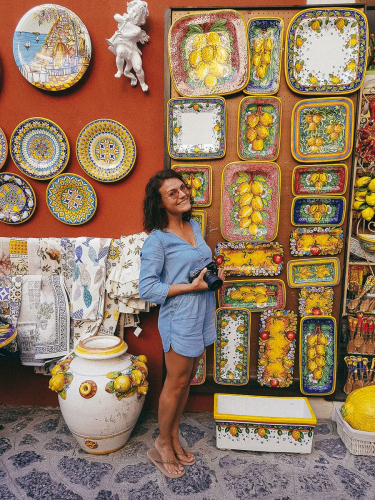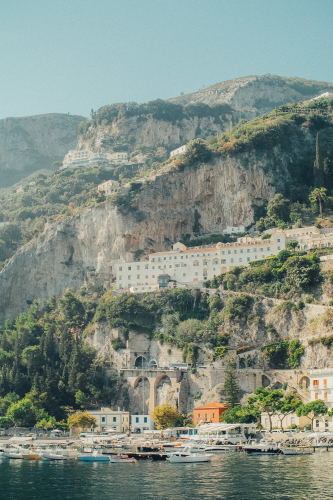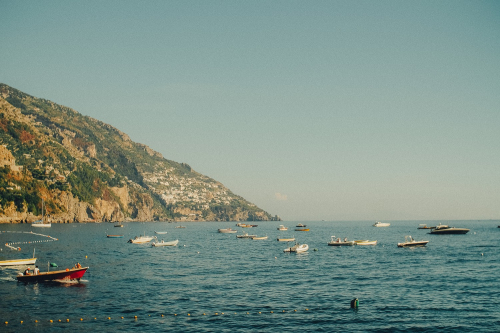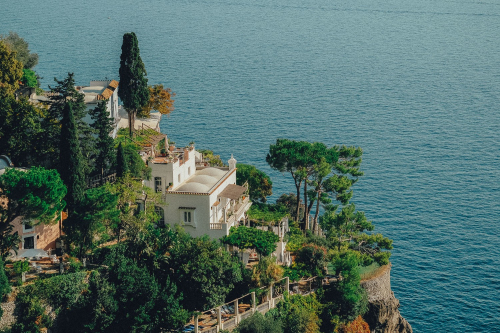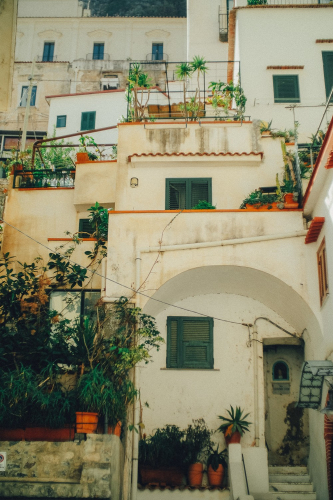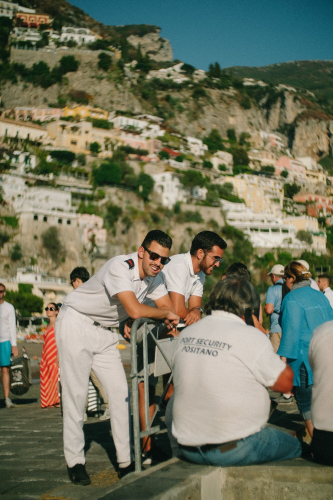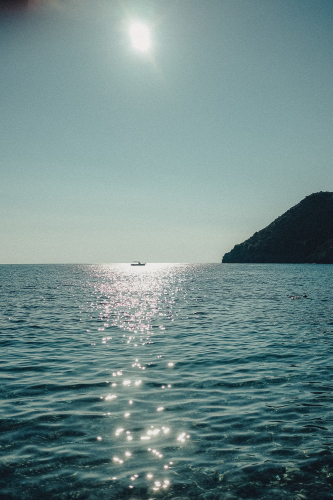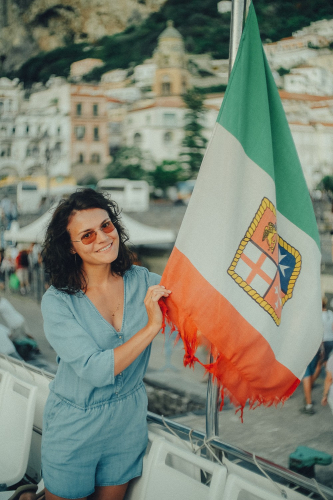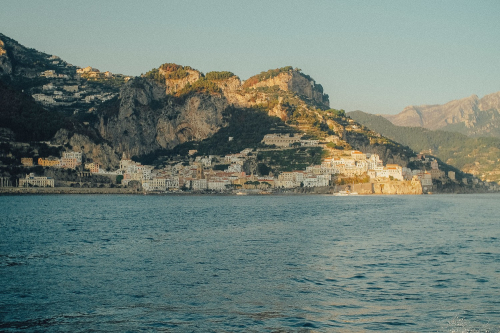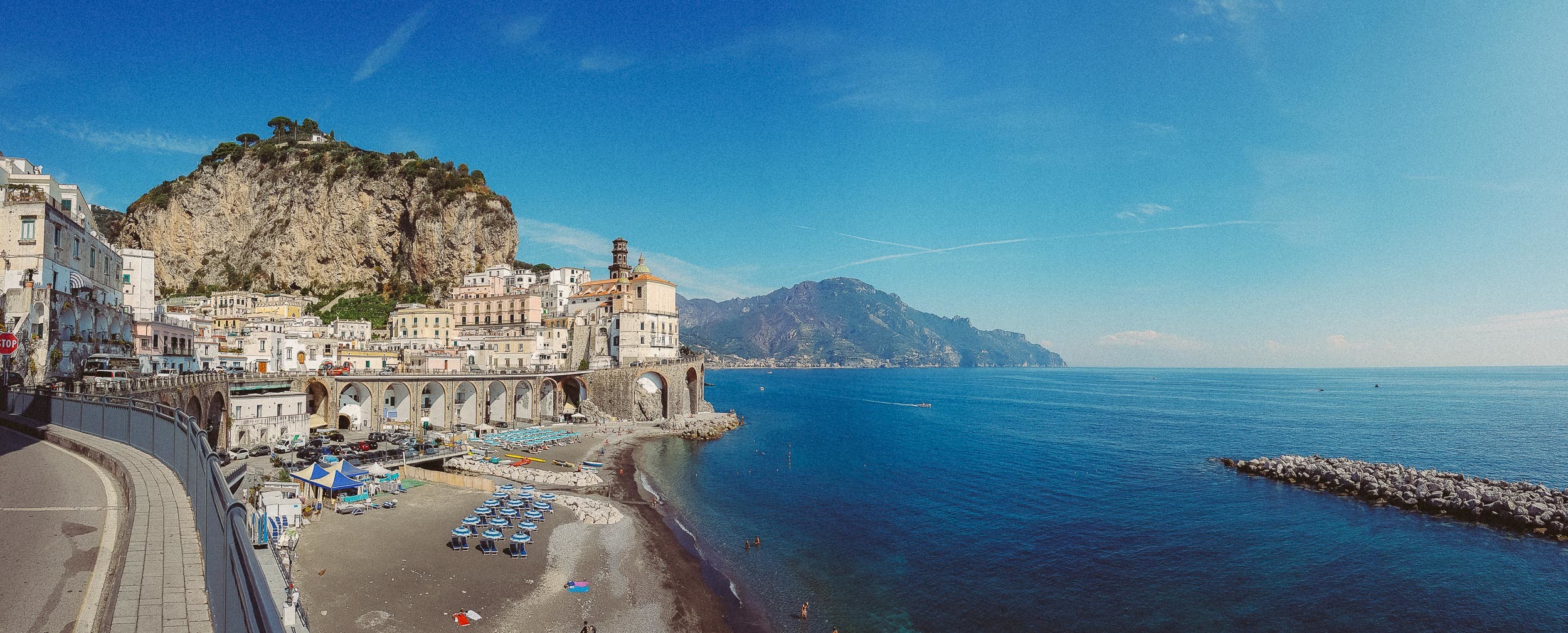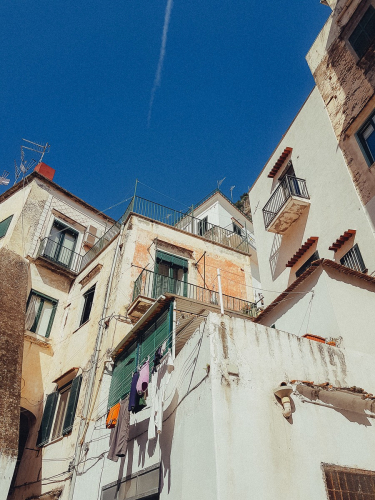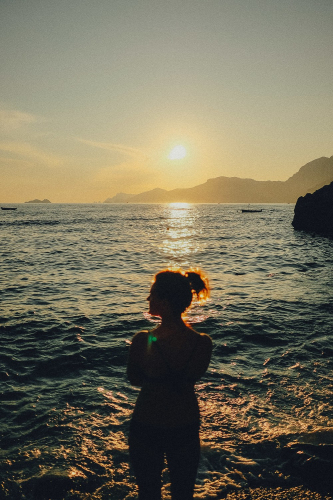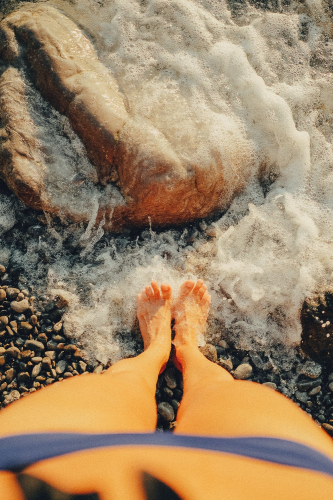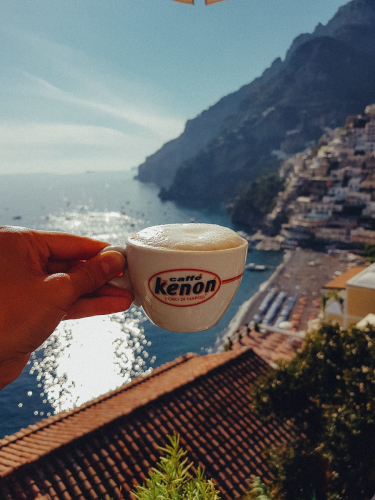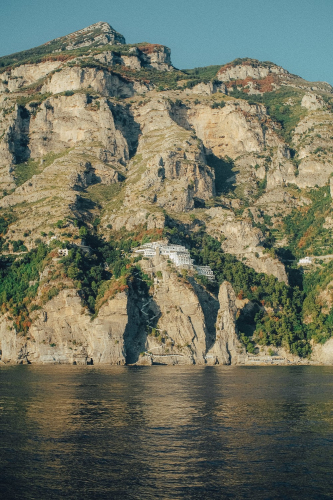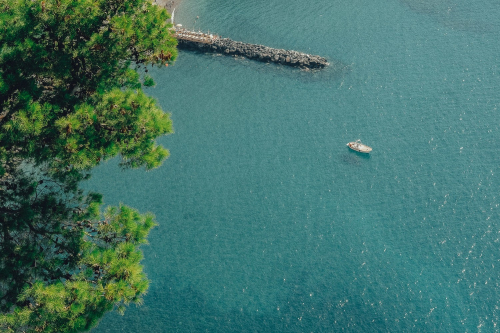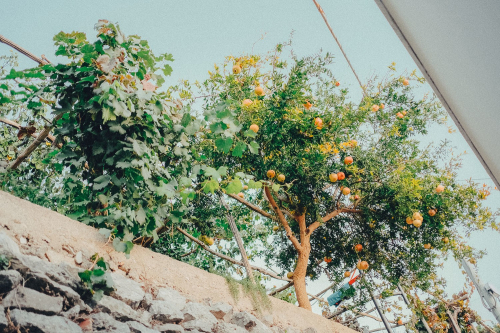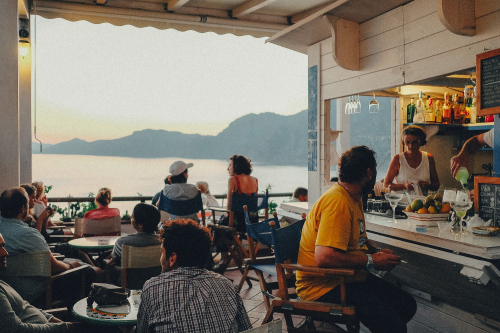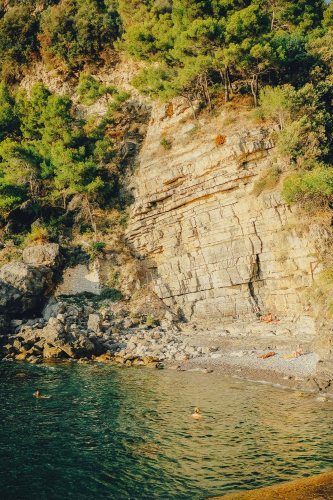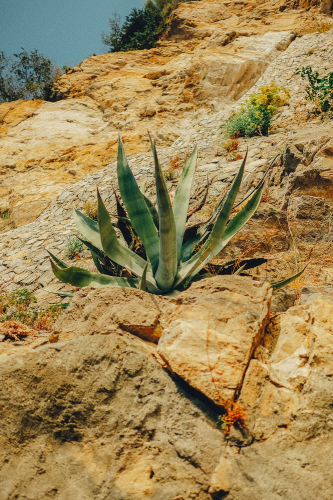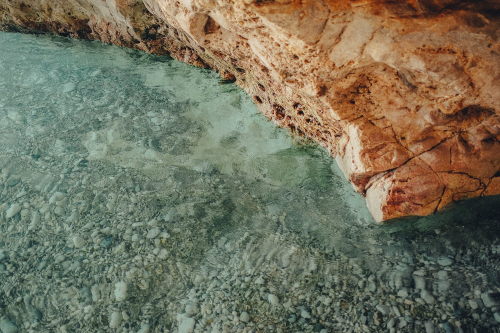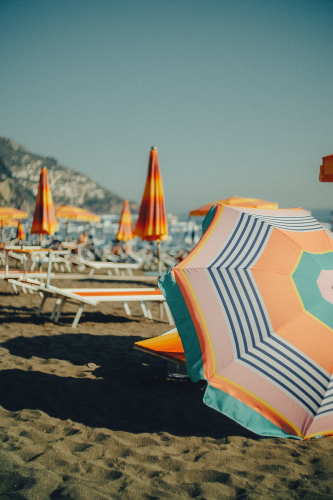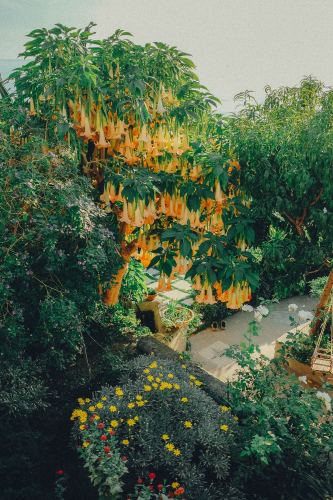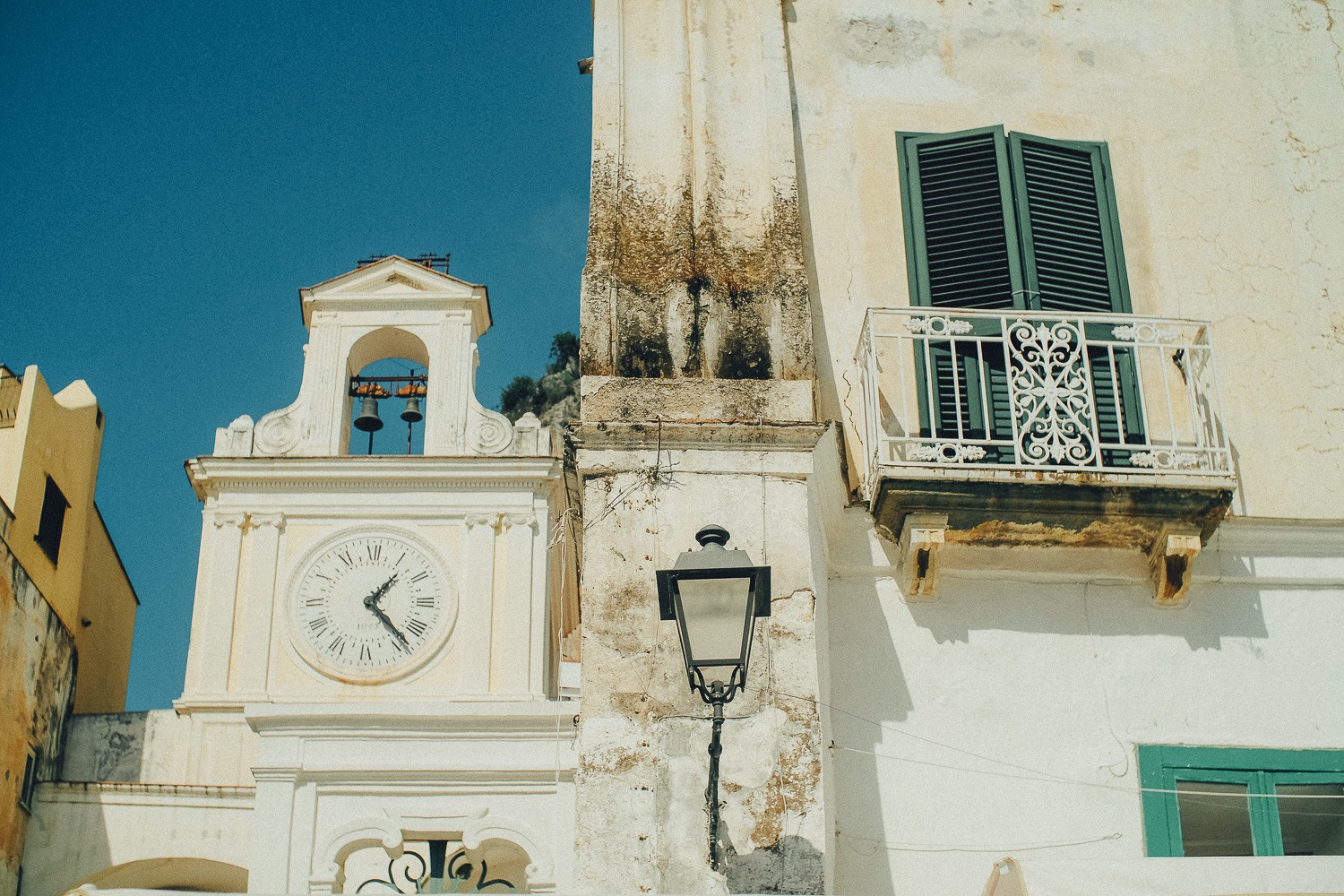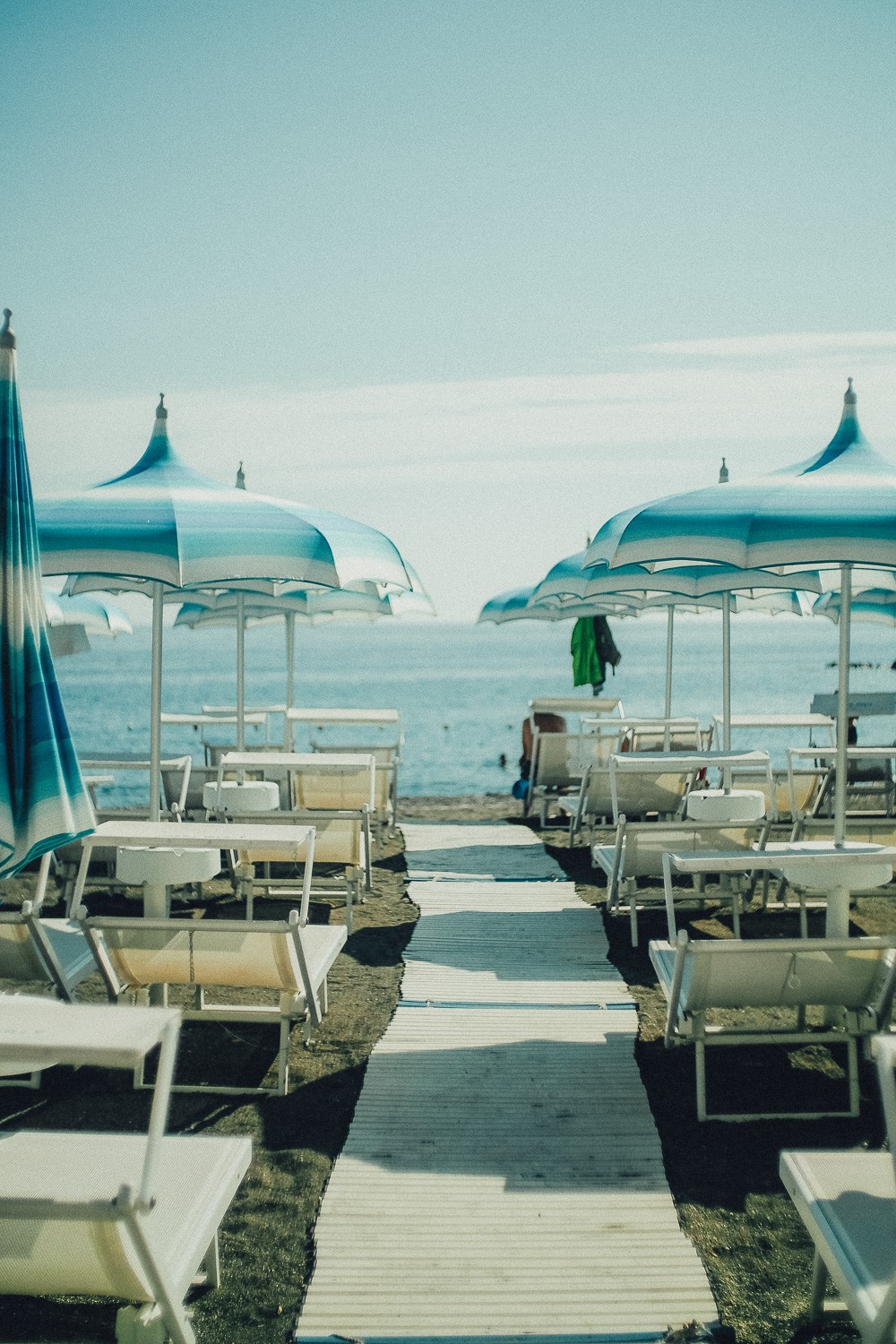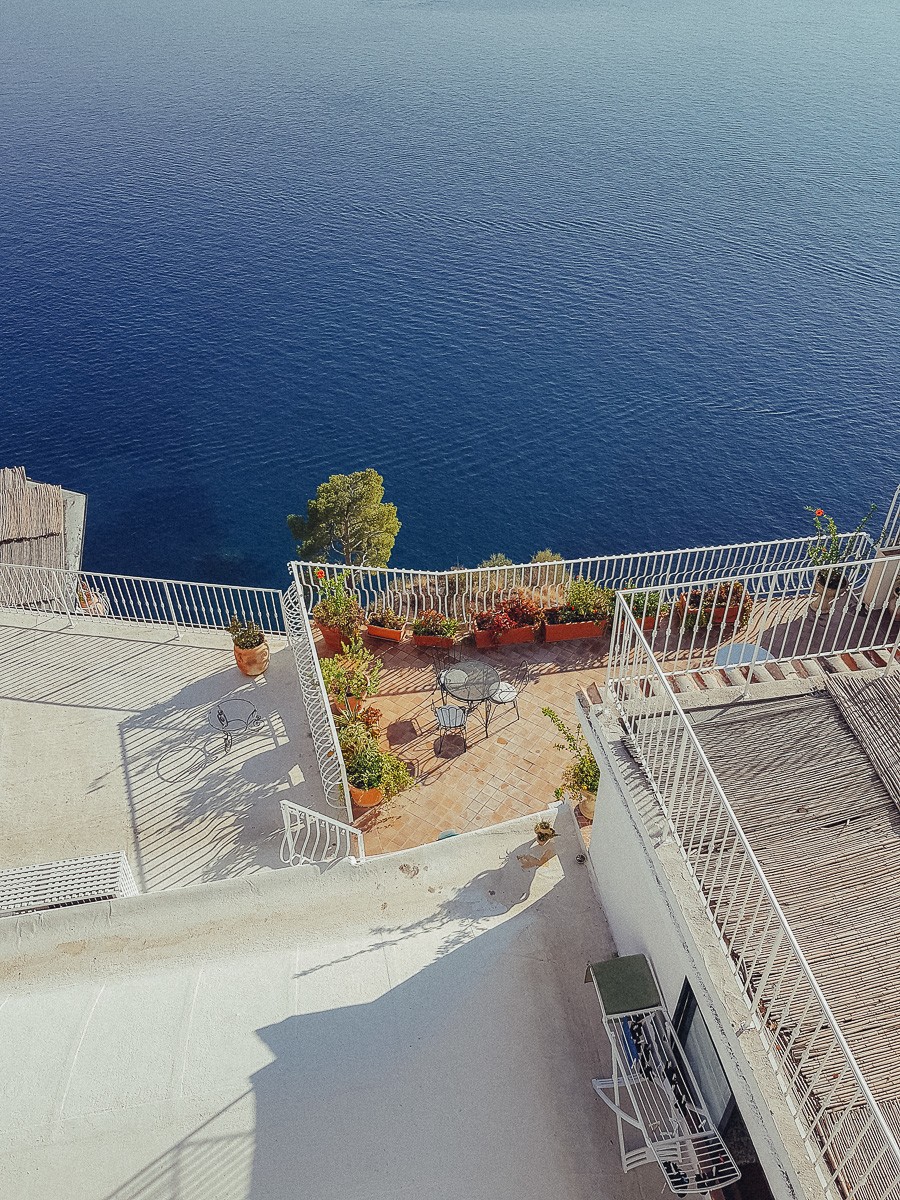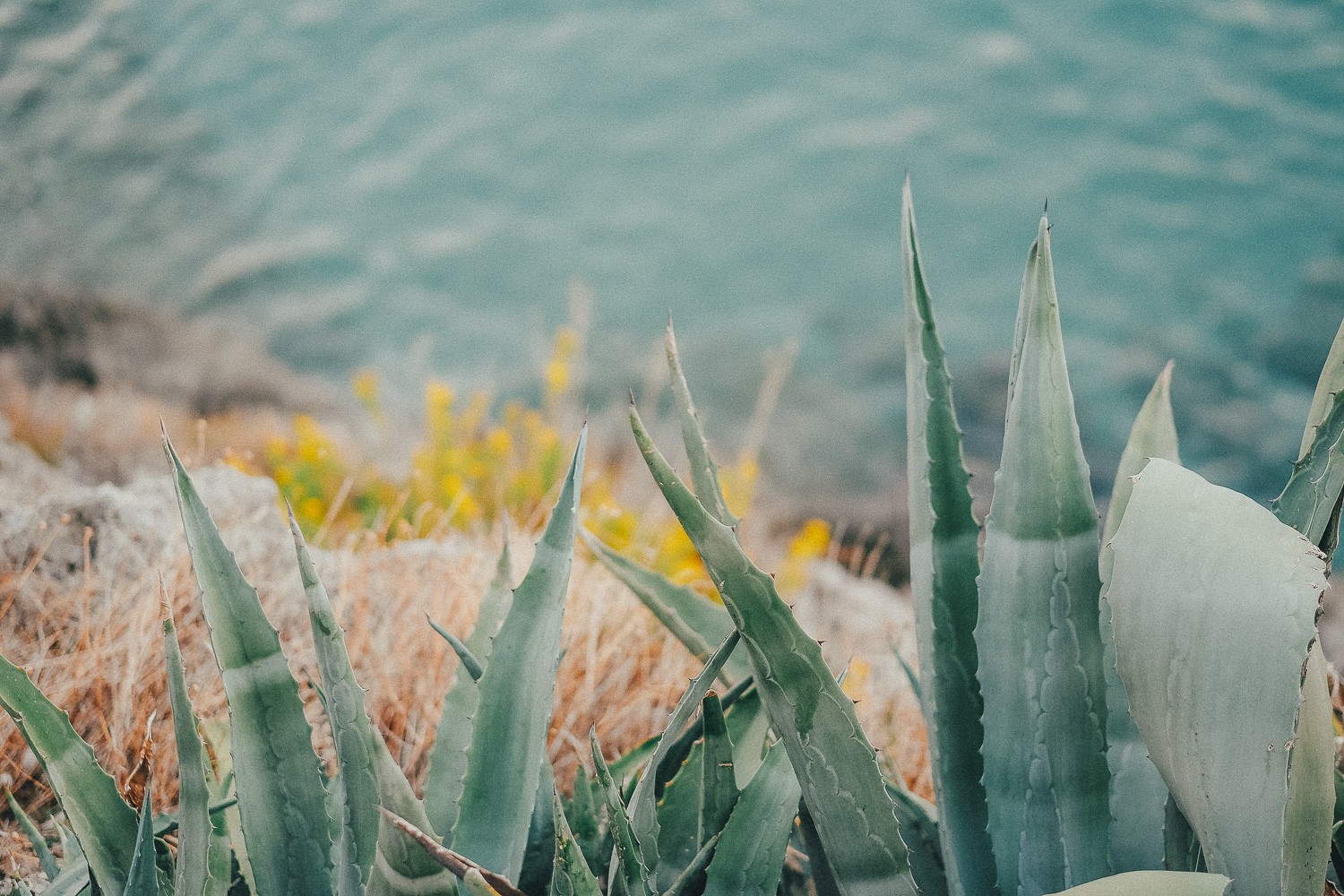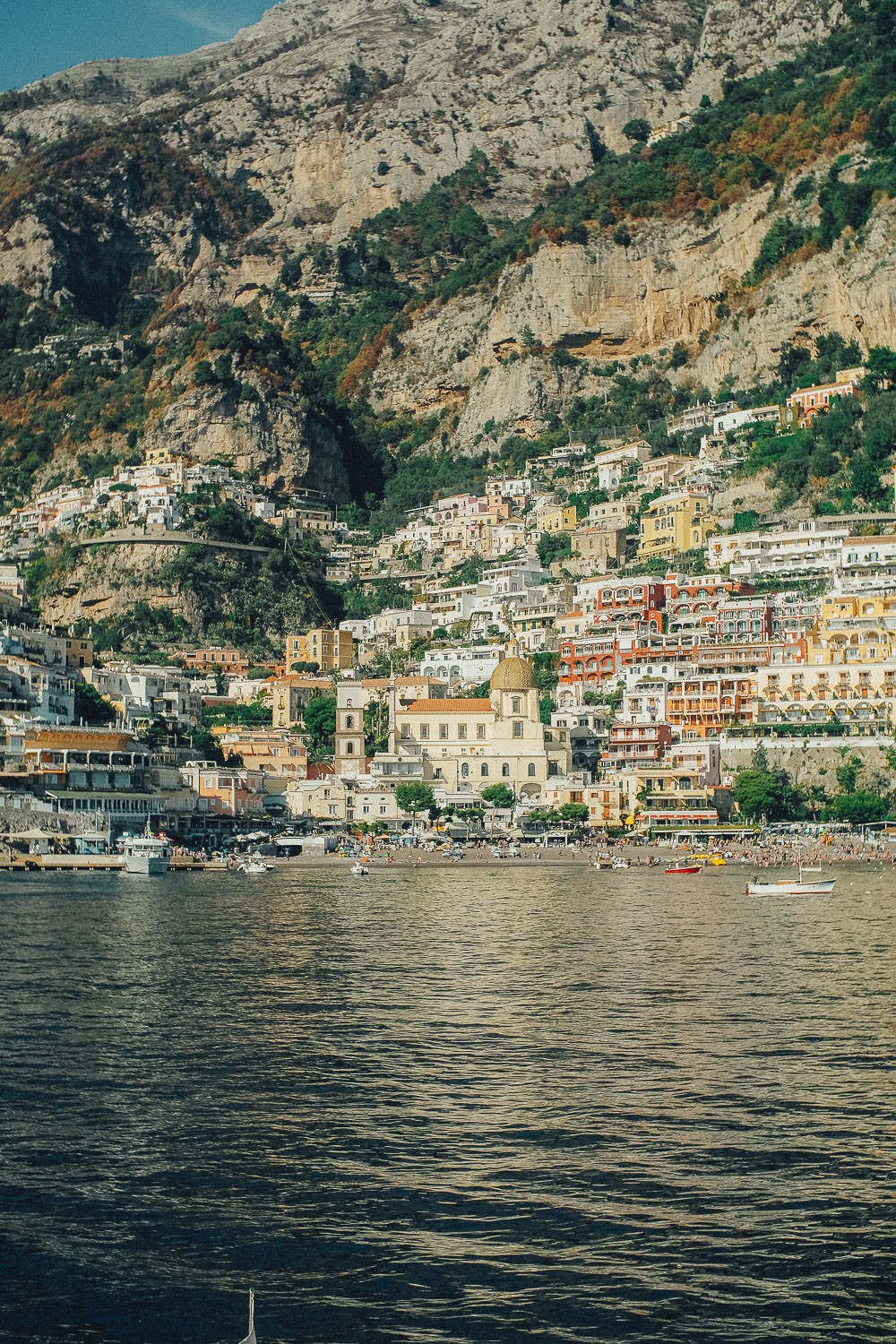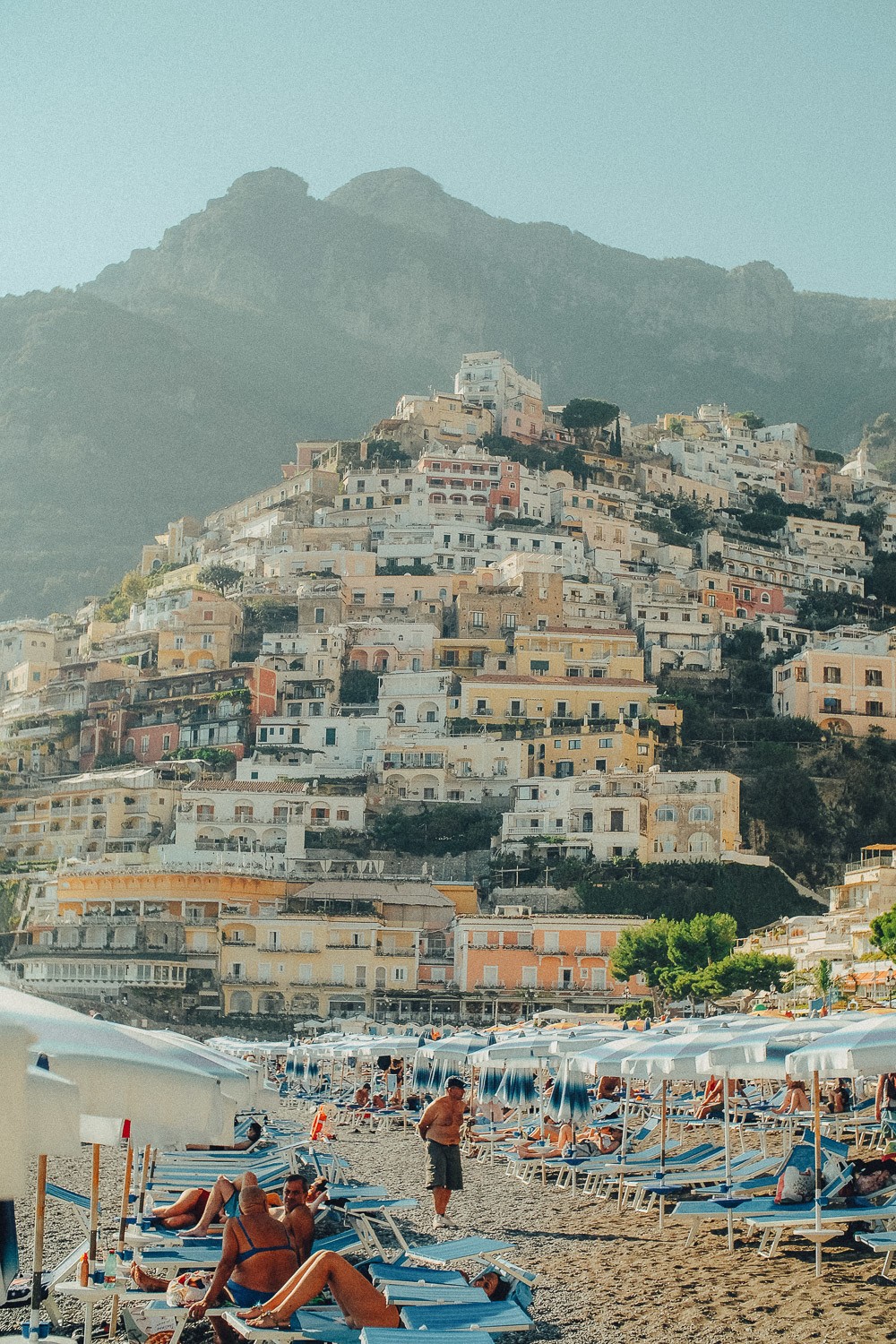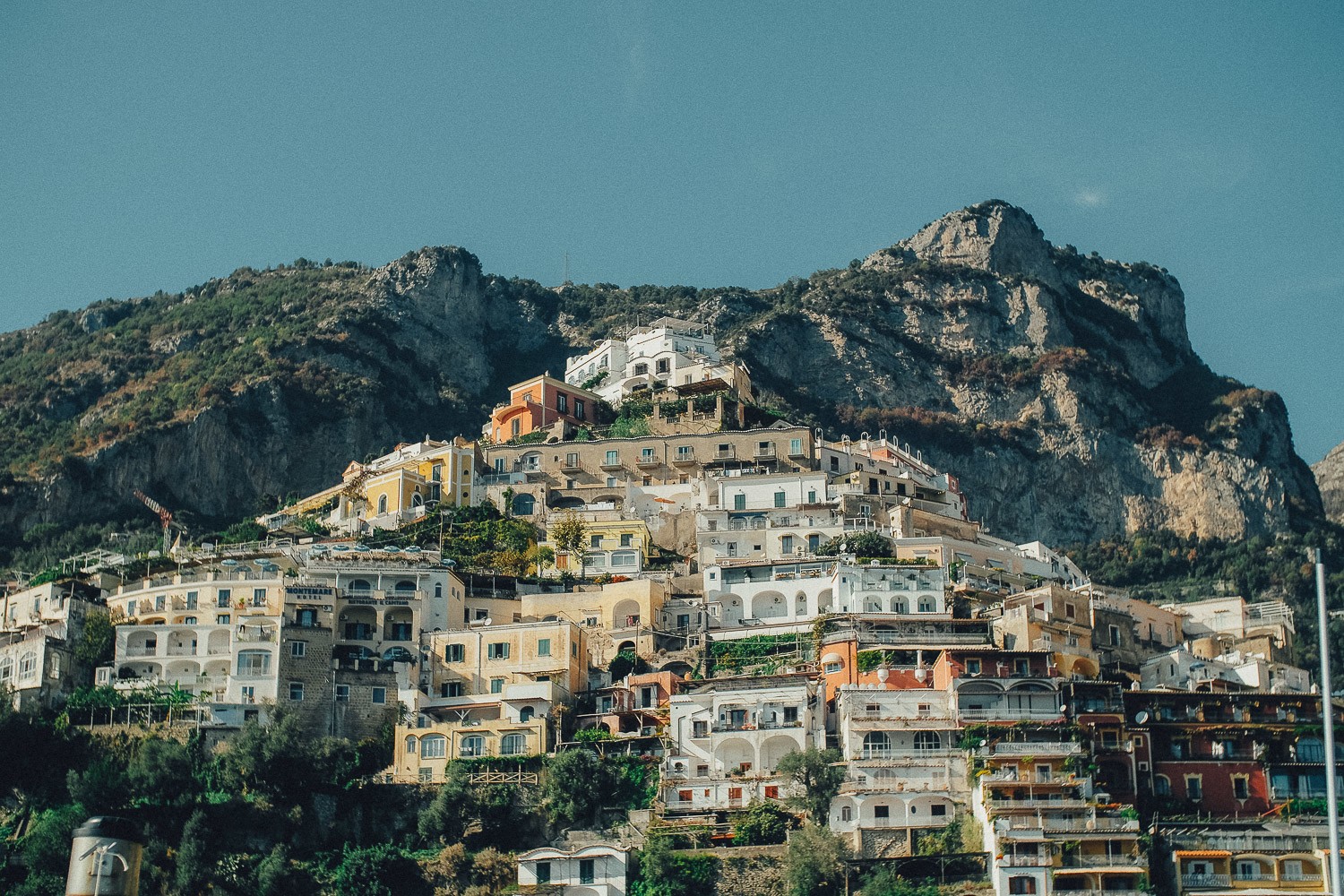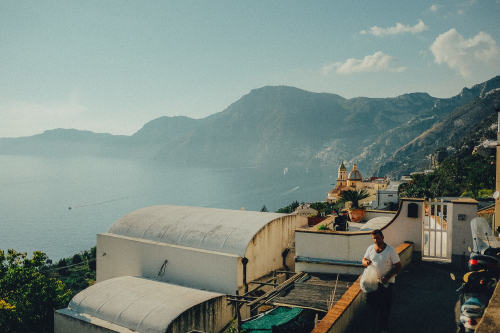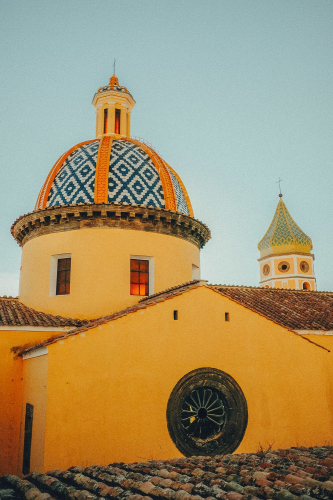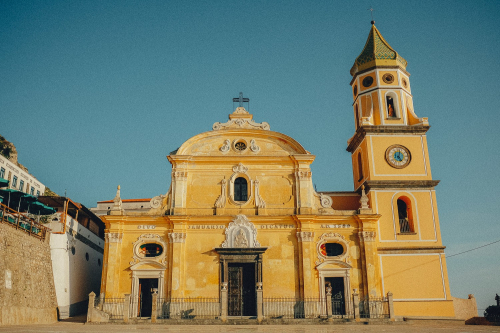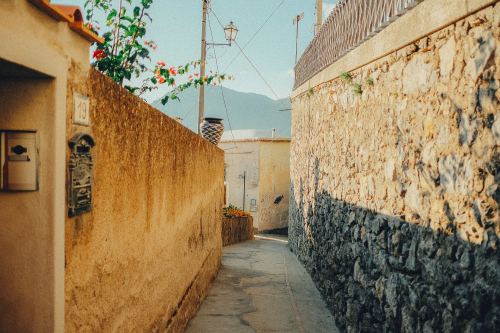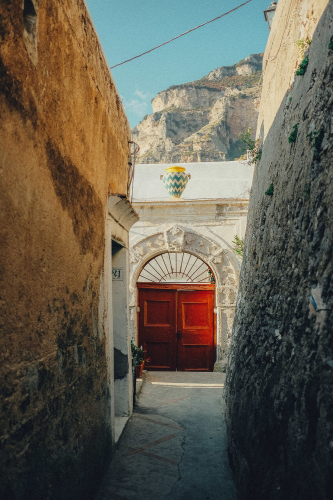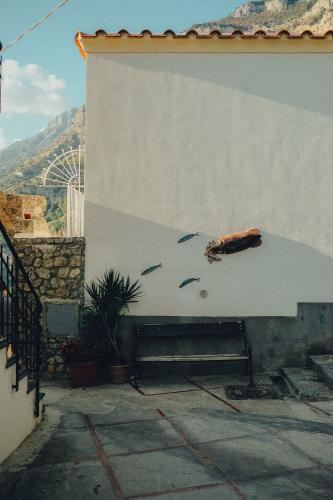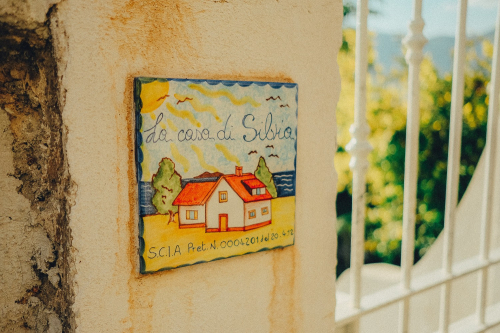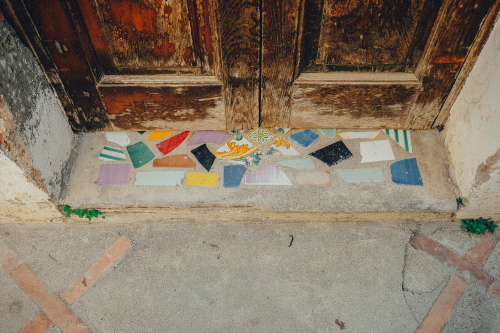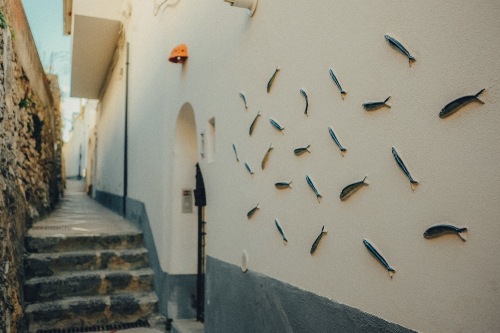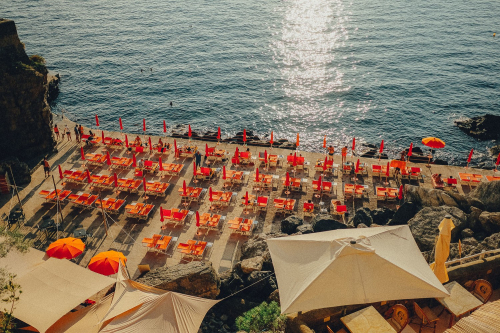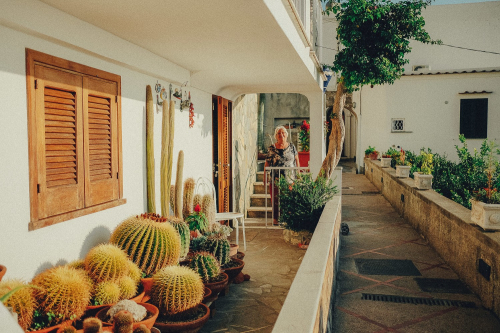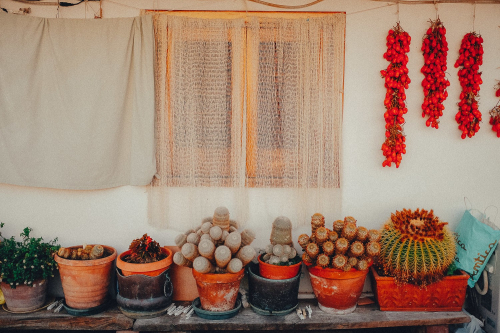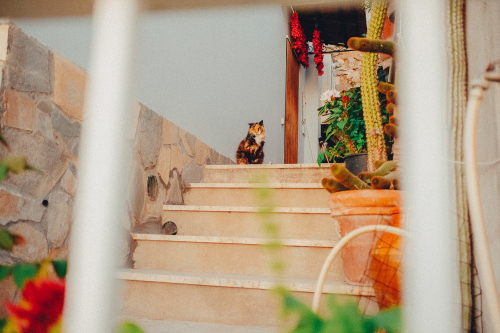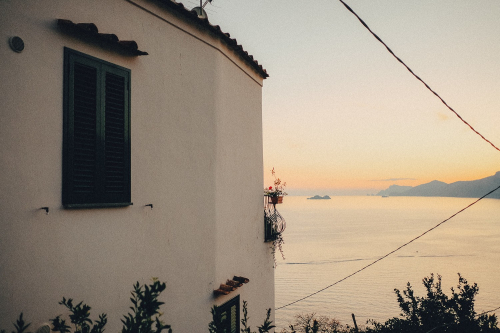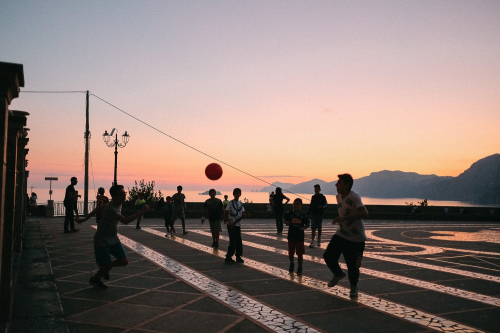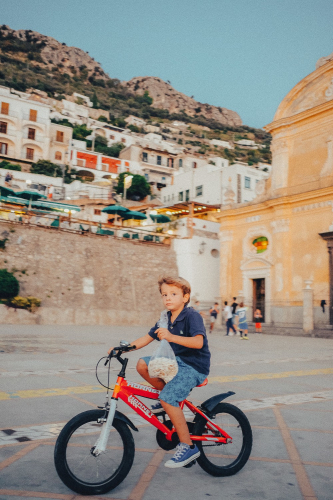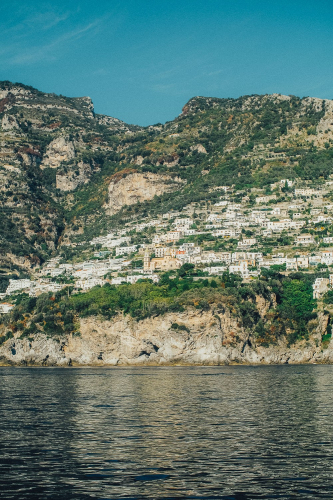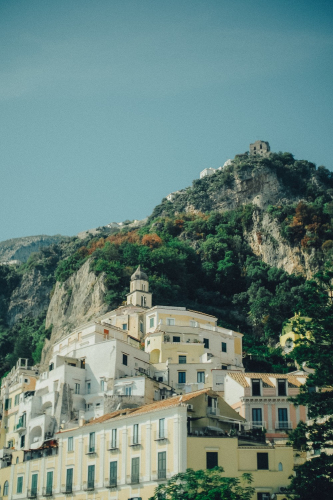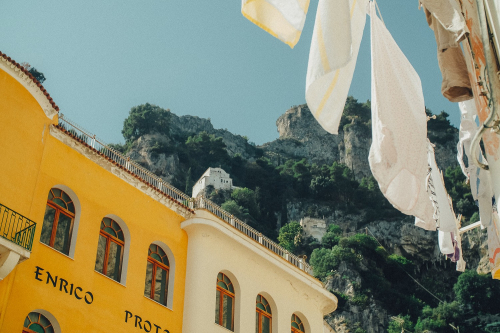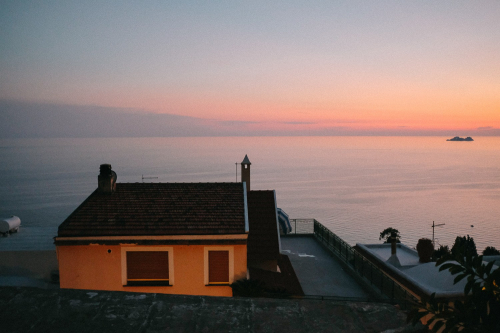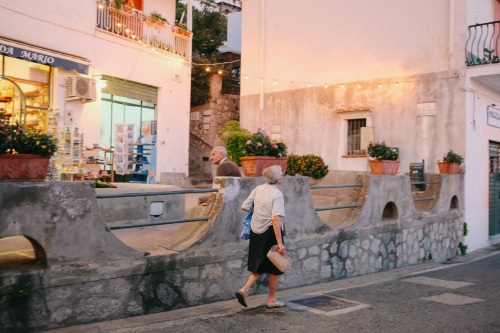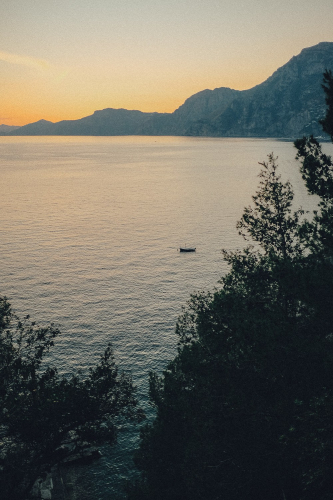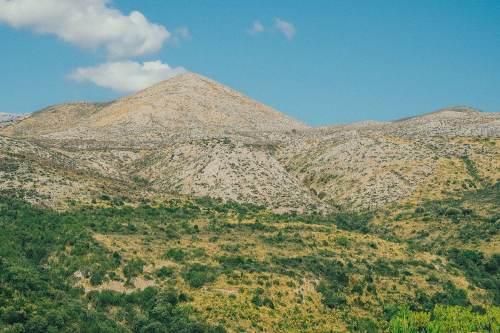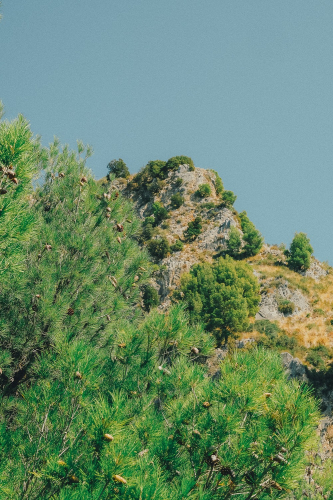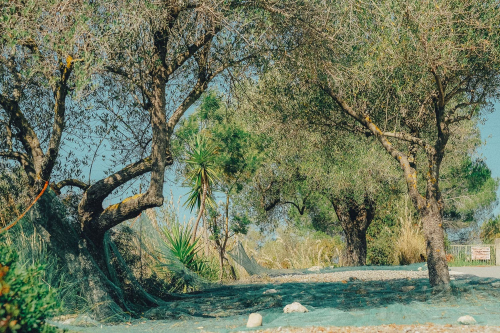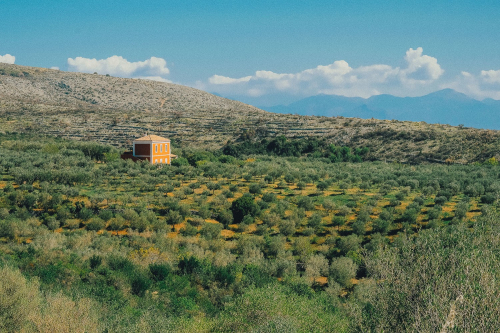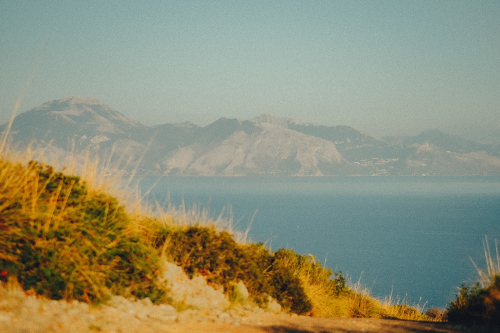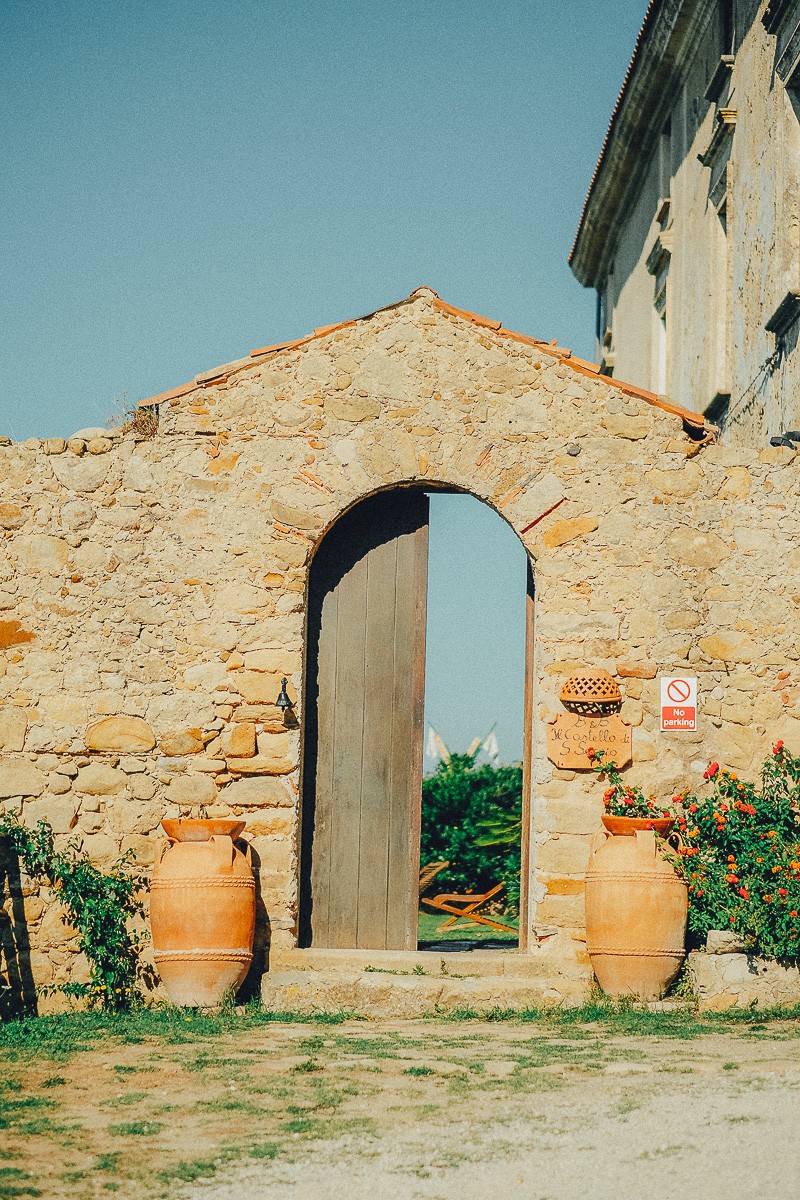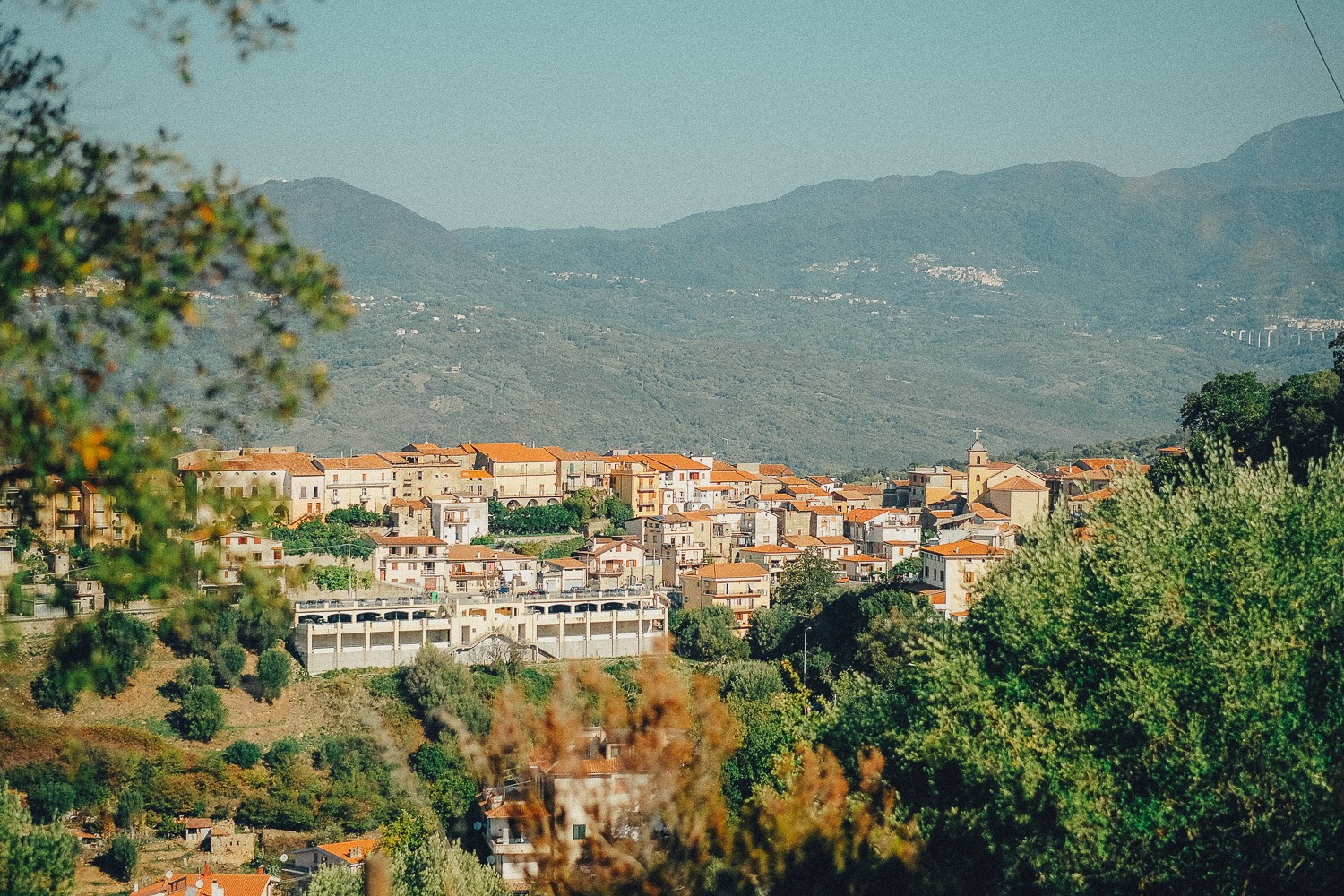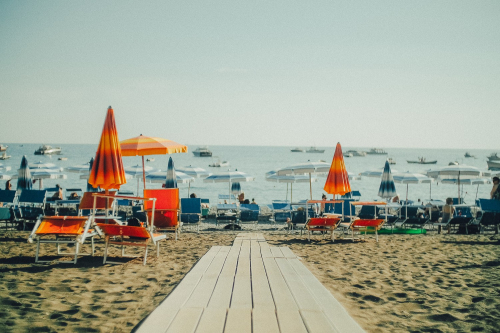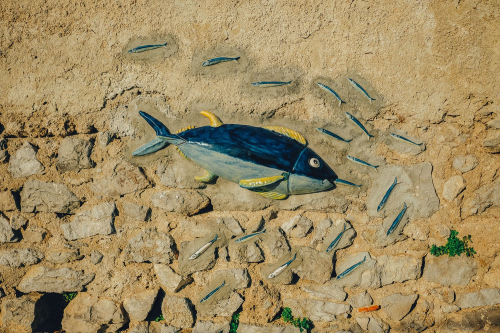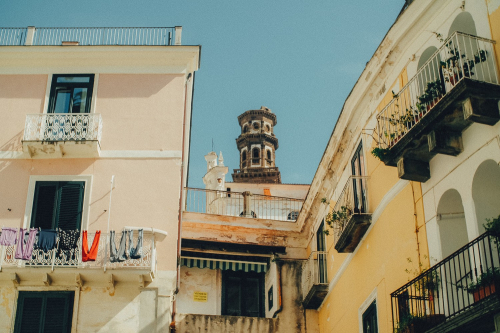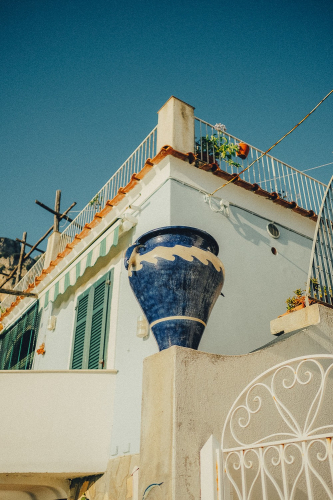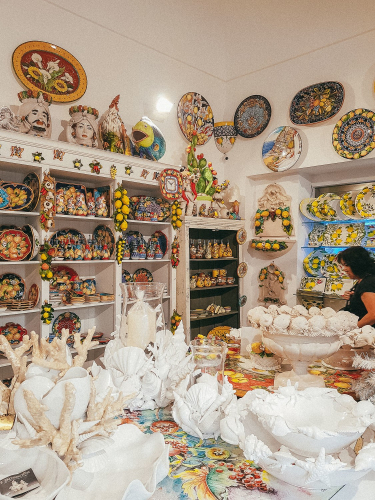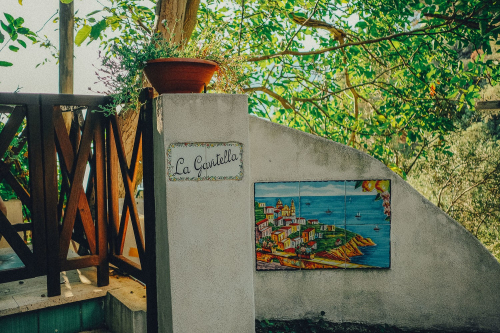The Amalfi Coast (Italian: Costiera Amalfitana) landscape is truly one of the most beautiful that I have ever seen in Europe! Amalfi landscapes are just waiting to be painted or to be in a song! It is 50 impressive km. of steep rocks and the azure sea waves splashing into thousand sparkling diamonds! There are many towns and villages of warm pastel colors climbing uphill and hundreds of picturesque terraces covered with lemon trees.
Apart from our impressions of the trip along the stunning Amalfi Coast, you can learn interesting facts about every village in my travel blog. Make me inspire you with the atmosphere through a photo guide! All names and important locations are connected by direct links to Google maps for your convenience. Official sites or helpful third-party sites are listed in order to discover more detailed information. The travel blog is filled with links to Wikipedia for those who wish to delve into the details, learn the history, and understand the names.
For a long time, this place was reachable only on foot or by sailing. Because of that, Costiera Amalfitana is called a “divine place” in Italian.
The famous Amalfi Drive (formally Strada Statale 163) stretches for 80 km. and borders the Tirreno Sea (Italia: Mar Tirreno) and the foothills of the Monti Lattari (Lattari Mountains). Groves of lemon trees and Mediterranean gardens surrounded, like painted cities and coasts, are nicely hidden here. The Amalfi Coast is a cultural landscape created over several centuries. The picturesque beach is decorated with blue-green shades of the sea and bathed in the beautiful light of the water rays shiny surface!
Behind every turn, behind every hill, new stunning views open up! Depending on the weather, a lot here can look completely different. Locals call this winding and rather a hard road “the road of the dream” (SS. 163 “Amalfitana”). Amalfitana was built difficulty in 1857. and since then, it has been modernized several times.
Lemons
The Amalfi coast is famous for its lemons and, of course, the limoncello, which you can find in every city and every village on the coast. Of course, every manufacturer believes that his limoncello is the most delicious and has the highest quality. In general, the theme of lemons is iconic here. Lemons are everywhere, but especially on ceramics – on plates, jugs, on tiles.
A bit of coastal history
For eight centuries, this remote district was ruled by people who did not care and its well-being: Normans, Hohenstaufen, dukes of Anjou, Spanish with led by Alfonso of Aragon, and Habsburg. They influenced on their own way the history of the coast and the people living here. Later on, in 1861 Amalfi coast entered the Italian Kingdom.
Now let’s talk about all 13 coastal cities that became UNESCO in 1997.
Amalfi
Amalfi Cathedral (Italian Cattedrale di Sant’Andrea) serves as a reminder of a brilliant past. It has an impressive staircase, an Arab-Norman-style bell tower, and a charming monastery. Back in 958 AD, Amalfi was the first of four Italian maritime republics – rich, independent and cosmopolitan. Arches from the Byzantine mosaic point out the close relationship of the Amalfi coast with the east. Even in those days, ships from here went to Constantinople, Lebanon, and North Africa. They traded with African gold, precious stones of Byzantium, Syrian fabrics and thereby contributed to the prosperity of Amalfi, which, however, did not last long. Even the patron saint of the city, St. Andrew, could not resist Pisa and Genoa. The city fell into decay and remained in this state for several centuries until tourists began to stay.
Atrani
Atrani is a beautiful and charming city, which is a natural amphitheater at sea. In the period of the ancient Republic of Amalfi, the official enclosure of the Doges took place in the church of San Salvatore de Birecto (X century).
Conca dei Marini
Conca dei Marini is a coastal village with centuries-old maritime traditions. It has a natural balcony with sea views, surrounded by Mediterranean vegetation and garden terraces planted with lemon groves «Sfusato Amalfitano». The first sfogliatella Santa Rosa was prepared at the Santa Rosa Monastery.
Furore
Once upon a time, there was a small settlement scattered on a mountain overlooking the sea and the picturesque road. In the village, there was no central square and layout of the village. The road and the stairs leading to the village were also not visible from the coastline, so Furore is almost invisible to travelers. That’s why Furore is known as the “city that does not exist”. Furore is the city of the fjord, carved over the centuries by the Schiato river, where the MarMeeting – High Diving World Championship takes place every first Sunday of July.
Maiori
The ancient river Reghinna Major became the favorite place of the Italian neorealist director Roberto Rossellini, in whose honor the «Roberto Rossellini Award» Film Festival is held annually in October. The city is quite ancient, but there are few ancient monuments: in 1954 river Reghinna Major overflowed the banks and literally washed away the entire historical building. Since the Middle Ages, the town has preserved unique churches, grottoes, watchtowers. The true pearl of medieval architecture in Maiori is the medieval Abbey of Santa Maria de Olearia. The majestic Norman Tower on the very shore of the sea, the castle of St. Nicholas on the hill (built-in 1400), and the Dominican Order monastery have also been preserved. The church of Santa Maria a Mare was built in the 12th century and in particular its roof, composed of colorful Maiolica tiles (a type of ceramic).
Minori
In Minori, the breath of history is felt more than in other cities. You can feel its spirit everywhere, just walk around the city. Minori was the admiralty and arsenal of the Amalfi Sea Republic in the Middle Ages. From 987 to 1818, the city was considered an episcopate and center of religious life. Numerous churches, towers, and monasteries you can find here.
Positano
Positano is currently one of the most famous places together with Amalfi. Its picturesque staircases, whitewashed houses that follow the natural course of the mountain, are creating a vertical landscape. However, 50 years ago Positano was a poor fishing village. During the Second World War, many European artists and writers moved to Positano. At all times, life here was easy, a liberal atmosphere reigned, winters were warm, and prices were not high. Positano is also known for its handmade leather sandals and clothes made of cotton and linen (the so-called “Moda Positano”), beautiful buildings of the XIX-XX centuries in a Mediterranean style, and a postcard landscape in the background with a tiled dome of the main church.
Praiano
Praiano, with its genuine and authentic atmosphere, is far away from mass tourism. The central place and the main attraction are the church Parrocchia San Luca Evangelista, whose dome is tiled with majolica, preserved ancient frescoes, and impressive tiled floors with flowers and birds. It is the church and a meeting point of locals: the square in front is always full of life – children play, youths gather in groups, older adults discuss the latest news. From here, the “path of the gods” (Italian: Sentiero degli Dei) originates steeply upward, and on your way, you can enjoy the view on the entire coast for hundreds of kilometers far away.
Ravello
Ravello is a real architectural gem. The names of such musicians as Wagner and Toscanini, artists Miro, Escher, Turner and Ruskin, poets and writers Boccaccio, Virginia Woolf, Paul Valerie, Andre Gide, as well as artists Toto and Greta Garbo are connected with the town: all of them have been in Ravello and fold in love with it.
Scala
Scala is the oldest town on the Amalfi coast surrounded by chestnut forests. It is located 400 meters above the sea. In the ninth century, the town was completely destroyed, but then rebuilt and fortified by the residents of Pisa. It served as a military fortification covering of Ravello (located on the opposite plateau). Rock was a very important strategic role in the Amalfi Republic then. Today it is one of the quietest villages on Costiera Amalfitana but dozens of hiking trails pass through it. There are no such chic hotels as it is in Ravello. Historical places remain more agricultural than tourist ones by now.
Tramonti
The name of the town literally means “among the mountains.” Tramonti was an important city of the maritime Amalfi Republic and a major trading port of the Mediterranean. Tramonti is surrounded by greenery and lush vegetation of the Lattari Mountains, consisting of chestnuts and vineyards producing full-bodied wines (Tintore wine). Tramonti is the perfect place to enjoy the authentic flavors of local cuisine, in particular dairy products, bread, and pizza, cooked since the Middle Ages in rustic ovens using rye, millet, and barley flour seasoned with spices.
Vietri sul Mare
The city of Vietri has been famous for many centuries for the beauty of its majolica (XV century). There is one curious fact regarding the traditions of ceramic production and the Germans’ influence made after staying in Vietri during the Second World War. Being capable chemists, the Germans invented formulas with which they obtained special colors for painting ceramics, which are considered unique, for example, the famous “yellow color from Vietri” (“Giallo di Vietri”).
